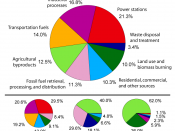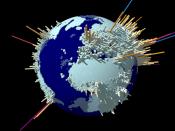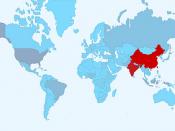Environmental Science SCI/275IntroductionThe population of the world in the month of July of 2008 was an estimated 6,706,993,152, which was 6.1 billion more people than in they year 2000, and the population is projected to grow to over 9.3 billion before the year 2050. These numbers, which are specific, are an indication of a severe problem that is developing for the environment and humankind. The population of humans in the world are solely responsible for the negative influence on the environment, which include the pollution of the atmosphere, terrestrial resources, water resources, and the conservation of energy. To solve these environmental problems, the root cause of the problems will have to be looked at first (Population Reference Bureau, 2008).
ProblemThere are four factors, which are responsible for the steadily increasing human population on earth. These factors are the rate of birth, the rate of death, emigration, and immigration.
If the rate of birth increases and immigration increases, the rate of death decreases and emigration decreases, along with the population size. Global Growth Rate (2008) stated, "Every minute we are adding 140 more people to the world, over 200,000 more every day, over 70 million more every year." These are staggering numbers because with the increase of the population, the problems of production of food, water supply, the production of energy, and the destruction of the environment become more pressing.
Negative Human ImpactsThe production of food is an aspect of overpopulation that is important when striving to meet the needs of consumption. Human beings, classified as omnivores, will eat almost anything with little regard to the consequences. Therefore, the production of food, which is animal based is one of the causes of some of the major problems in the environment such as global warming, and pollution of the atmosphere,


